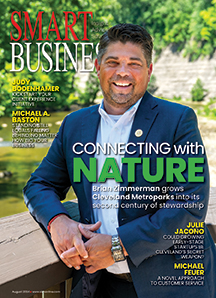
Mark Kirschner is in the moving business. When people need to go from Point A to Point B, he wants Wheaton Van Lines Inc. to be the company that gets them to their final destination as smoothly as possible.
So when the economy collapsed in 2008, it created a problem for Wheaton. Fewer people in the residential market were moving, and those who were often weren’t doing so by choice. And when you’ve just lost your house through a foreclosure, you’re probably not hiring a moving company to get you to your next place.
“So with that, cash flow decreased for our industry,” says Kirschner, the company’s CEO. “Not just Wheaton but the whole industry. So we had to find ways to be sure our agents were diversifying and finding new revenue streams.”
Kirschner believed in the service that the $160 million company provided to help families move and assist companies with corporate relocations. He knew that the company also specialized in government and military relocations, logistical services and special commodity shipments.
But he came to the conclusion that the company wasn’t doing enough to let potential customers know about the diversity of Wheaton’s offerings.
He began with a mandate to the company’s 120 employees and 250 agents across the nation who are affiliated with Wheaton. The message was simple: We’re going to work together to make sure everyone succeeds.
“We talked to everyone,” Kirschner says. “We enlarged our circle. We looked for new ways to reach our customers. We started to make a focus on the social media aspect of reaching out to our customers. We were trying to develop as many sales channels or sales windows as possible so the customers have access to us.”
Wheaton clearly had the wherewithal to diversify and keep the revenue coming in. The company just needed to do a better job of promoting itself and put more emphasis on the quality of service it provided and the advantages that service provided over the competition.
Sell your plan
Kirschner needed to galvanize his nationwide network of 250 agents behind this renewed commitment to quality and service so that Wheaton could sell that package to potential clients.
“We’re letting our service providers and agents know, ‘We’re going to make our brand more powerful through the service offerings we’re making available to you,’” Kirschner says.
He wanted to work with his agents to develop ways to provide even better customer service and address more of their needs. This wouldn’t be a plan that he would just force on people and tell them to go do it. It would have their fingerprints on it, too, giving them ownership in its outcome.
“Let people know that you’re open, that you care and that you want to hear what they have to say,” Kirschner says. “Let them know that you’re not afraid to fail or take chances and you’re not afraid for them to fail.”
His hope, however, was that through thorough discussions with his agency network, the company’s efforts would answer any questions and keep failure from being an issue.
“Usually, when we have a new proposal, we do a good job of stating, ‘What if this happens, what if this happens, and what if this happens? What happens if this doesn’t succeed? What are the ramifications? How much of a risk are we willing to take? Are we OK if we do this and fail?’” Kirschner says. “As long as you have those kinds of discussions and everyone’s voice is being heard and it’s not being ramrodded through, you’ll be OK.”
Kirschner made it a point to seek out those who he knew had resisted change or new ideas in the past. He wanted to know what they thought of the customer service that Wheaton provided.
“Every group is going to have some naysayers,” Kirschner says. “We’ll say, ‘Here’s a proposal. What do you think?’ If there’s a hole in it, they’ll find it. Address the resistance head on.”
You need to recognize the difference between someone who is trying to help you by pointing out concerns and someone who is just trying to be an obstacle to progress. The person who is trying to help can be a big asset to the selling of your plan.
“Are they there to resolve the problem or are they there to create a problem?” Kirschner says. “You’re going to know that by having face-to-face conversations with them. The most important thing is to look at it from their eyes, not your eyes. Find out why they are so passionately disagreeing with you.”
Fortunately, at Wheaton, most of Kirschner’s team jumped right on board with the effort to reel in more customers through its renewed focus on great service.
“You have to listen to the people that are working directly with the customers on a day-to-day basis,” Kirschner says. “You have to have a dialogue where it’s open and they can come to you and have a two-way conversation about what are the needs of your customer.”
Don’t get too hung up on titles and territories and who is responsible for what when you’re having these kinds of discussions. If someone has a great idea, don’t spend a lot of time worrying about where it came from.
“Don’t pigeonhole anybody or put them in a silo,” Kirschner says. “Everybody has an equal voice at the table. And as the CEO, you speak last. Your job is to listen more than it is to talk. You just create that environment where it’s supportive.”

